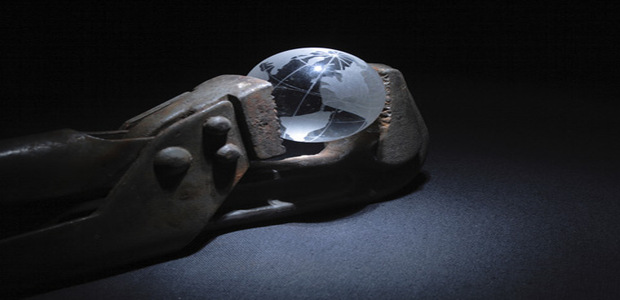Climatic changes over the years have resulted in rising concerns of our planet’s future among scientists all over the world. Famed British scientist James Lovelock framed the problem of this ever increasing concern best in his book The Revenge of Gaia (Allen Lane, 2006). If Gaia – the Earth – is envisioned as the living planet she surely is, then she is in failing health. In any treatment humans might consider as her self-appointed physicians, we are duty-bound by the principle rule of medicine: first, do no harm. Viewed in this way, geoengineering schemes designed to offset the effect of increasing greenhouse gases by tinkering with the planet’s systems must give pause for thought.
Our geomedical doctor’s kit is somewhat limited and we’ve learned some bitter lessons when we’ve tried to put things right in the past. Two recent examples, the Fukushima nuclear crisis of 2011 and the Deep Horizon Gulf Oil disaster of 2010, show how easy it is for humans, through technology, to create a problem they cannot fix in time to prevent catastrophic consequences. Some of the least invasive geoengineering ideas include sucking CO2 out of the atmosphere by using artificial trees with slats or leaves with chemical coatings that absorb CO2 (so-called air capture), or injecting it into underground geological formations (carbon capture and sequestration). These seem relatively harmless and worthy of consideration. Other proposals, like placing vast arrays of mirrors in space to reflect some fraction of the Sun’s rays, might in principle help to cool the planet but their economic feasibility is unclear.
Other schemes are more troubling. Among them is the idea of injecting particles into the stratosphere to simulate the natural cooling effect of large volcanic eruptions in which atmospheric sulphates reflect some of the Sun’s energy. Following the eruption of Mount Pinatubo in the Philippines in 1991, global temperatures dropped by 0.5ºC. It’s this effect that the Universities of Bristol and Cambridge in the UK hope to investigate, and that Stanford and Rutgers Universities in the US, and the University of Calgary in Canada, are already investigating.
While this might prevent the planet from warming, it would, in all likelihood, generate a very different climate by injecting particles. Some regions would cool but at the expense of other regions warming even faster. This counter-intuitive effect results from the simple fact that the regional pattern of cooling from a volcanic eruption is not simply the mirror image of the greenhouse warming pattern. Volcanic eruptions influence atmospheric temperatures in a different way to greenhouse gases, so they would have a different impact on the jet stream and surface wind patterns. It’s therefore within the realm of possibility that the Arctic might warm even faster than if we had done nothing at all. We could exacerbate the melting of the major ice sheets, accelerate sea level rise and doom the polar bear to extinction, among other unintended consequences.
Just like the doctor who tells the overweight patient that there is no simple pill available and that a healthier lifestyle of less sugar and fat and more exercise is the only reliable solution, it’s the same with the malady afflicting Gaia. We must cut carbon from her diet – and quickly. Globally, we currently emit roughly 9 billion tonnes of CO2 into the atmosphere each year. In order to stabilise atmospheric CO2 concentrations below levels that will likely incur devastating changes in Earth’s climate, we need to bring annual emissions to a peak of no more than about 10 billion tonnes per year within the next decade, and subsequently lower them to less than 4 billion tonnes or so per year by midway through the 21st century.
To accomplish this task while meeting growing global demands for energy will not be easy. Nations like the US and UK have grown accustomed to fossil fuel energy while developing countries such as China and India feel entitled to the same cheap fossil fuel energy that the developed world has accessed for more than two centuries. Like our overweight patient, we might have to consider some difficult lifestyle changes. We might have to tolerate the unpalatable notion of nuclear energy while alternative energy technologies are developed. And if that’s not adequate to attain the necessary calorific restriction, we might have to resort to some environmental liposuction – removing CO2 from the atmosphere: the least risky of the various geoengineering schemes that have been proposed. In the end, only one thing in all these considerations is for certain – we ignore Gaia’s medical alert at our peril.
Article by Michael E Mann who is an American physicist and climatologist. He is Director of the Earth System Science Center at Penn State University.
-end-

































